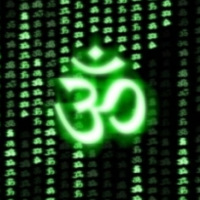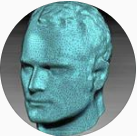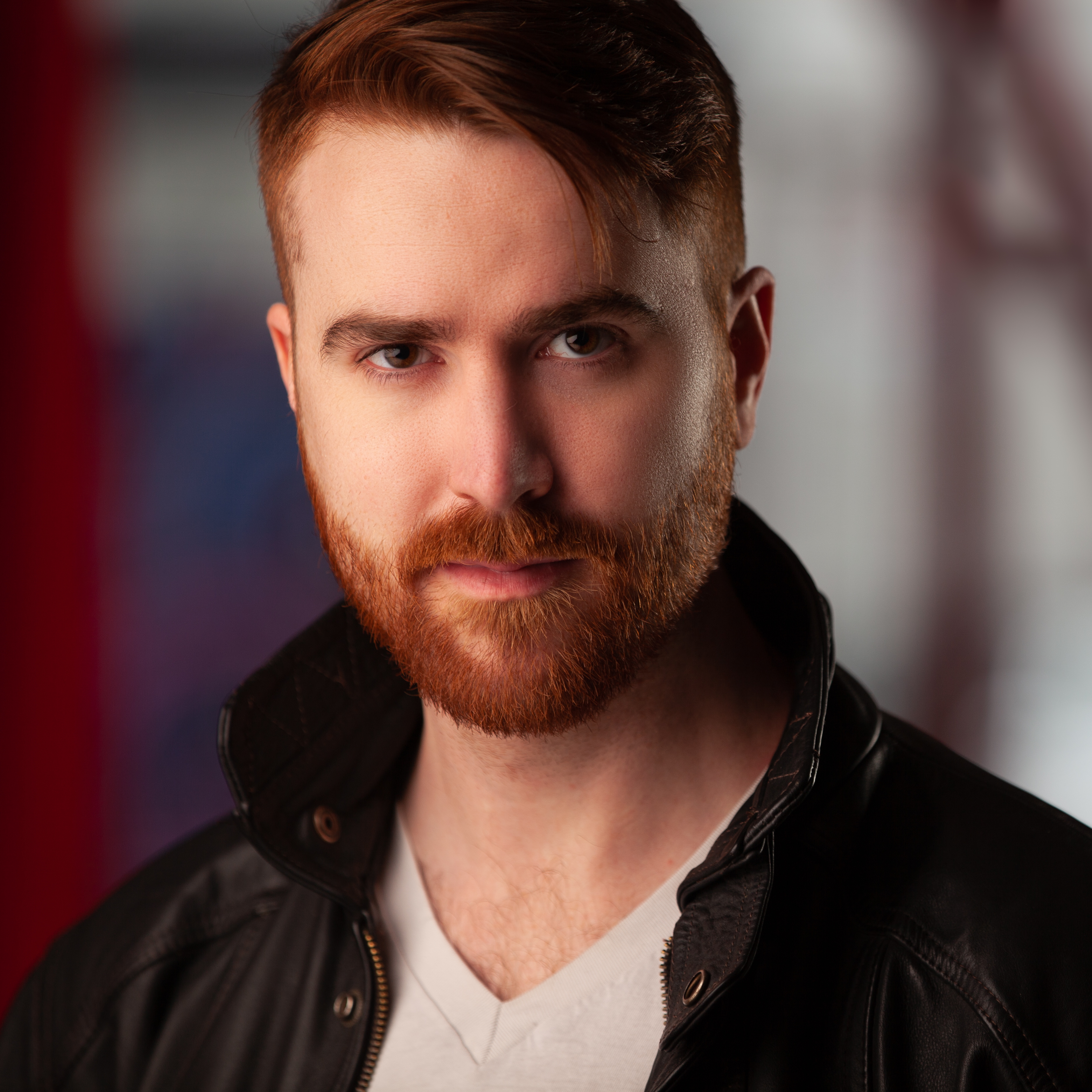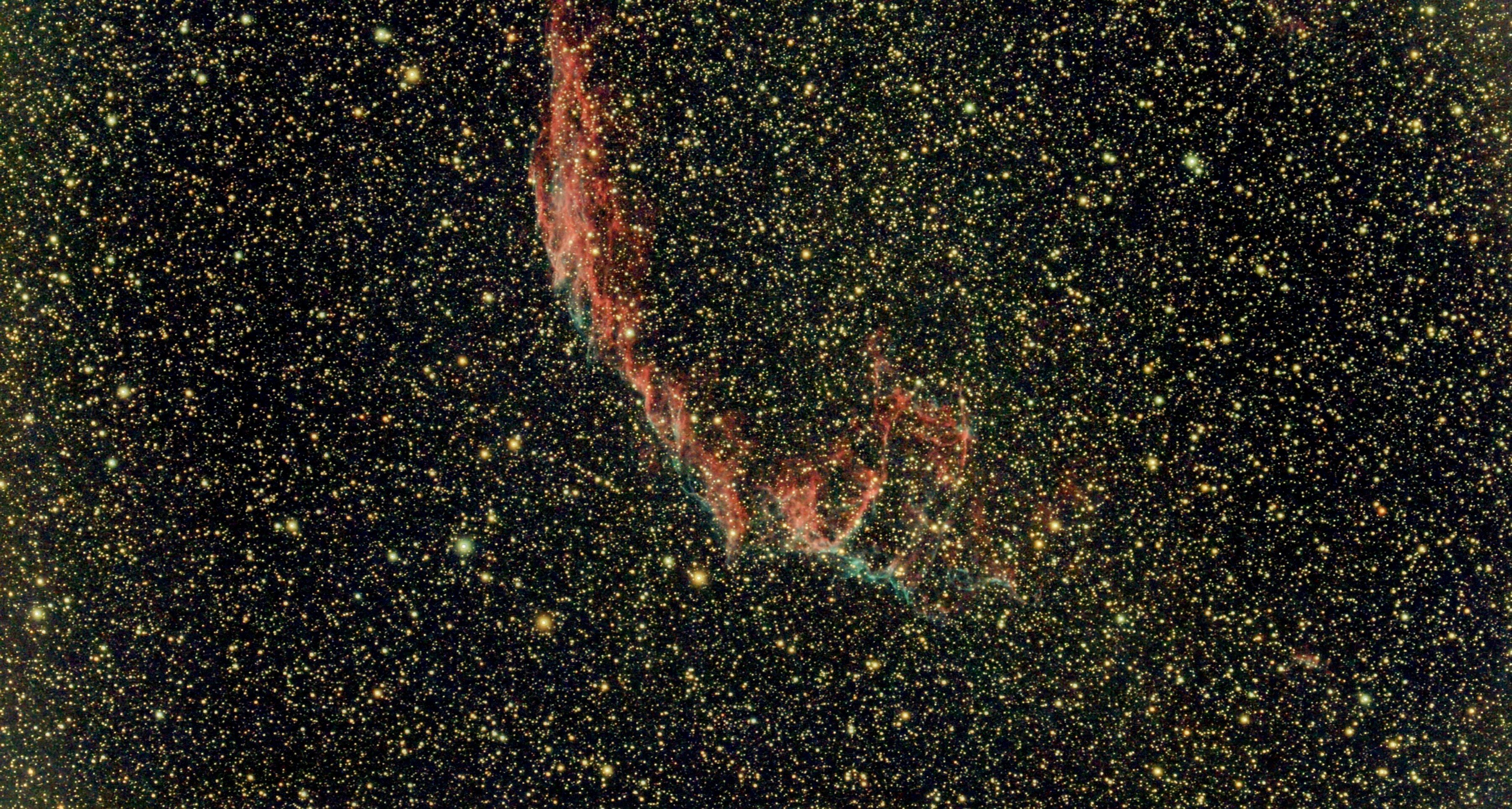Fyi, there’s a lot of
woo woo(edit: apparently racist term) crap out there that tries to make you believe that somehow the photons can feel that a human is watching them and they choose to behave differently as a result. This is not true. It just means that when you use a detector or some sort of probe that physically interacts with the photons they change their behavior. It’s not magic.So, it’s fine that you don’t understand the experiment, it’s really confusing and not intuitive. It’s not that the photons change their behavior when measured. It’s that they pass through two different slits as a probability field, and the field collapses as soon as it is measured in any way. It’s not just that the behavior changes, the nature of the photon changes. It doesn’t exist as a single point in spacetime until it is measured.
One of the key points that the “it’s just mechanical interactions, bro” crowd should be more aware of though are the quantum eraser variations (not the delayed choice quantum eraser).
There is still something rather bizarre about mechanical interactions that measure which path information being sufficient to collapse on their own but suddenly insufficient when something like polarization which erases which path information is added back in later in the chain.
Also, it’s worth declaring when giving an answer like this that you are operating under the assumptions of QFT, and that this isn’t necessarily for sure what’s going on. For example, I’d imagine there’s Bohemian mechanics adherents still around somewhere that would take issue with your “it doesn’t exist as a single point in spacetime until it’s measured.”
Can you explain that more simply?
I’m assuming you are asking about the first part?
So the double slit experiment was a starting point, and there’s been a bunch of variations testing different aspects.
One of which is that we can ‘tag’ the photons that go through path A with an indication it went through path A and tag photons passing through path B accordingly.
As would be expected, when tagged this way both result in ballistic patterns as if particles and not waves.
But the neat part is that if you add a polarizer after they are tagged which removes any way of recovering the tagging information about which path they went through, the interference pattern comes back and they behave like waves again.
If the explanation for why it goes from a wave to a particle in the first place is something like “it was disturbed by the act of measurement”, adding additional disturbance would seem like the last thing to get it back to behaving like a wave, right?
The variation suggests that the collapse of the wave function relates to the continued existence of recoverable information about the photon, not necessarily the physical mechanics of its measurement at that instant in time.
As for the other comments I made, the TL;DR is that there’s easily a dozen different interpretations of why quantum weirdness occurs among physicists, and so very often when you see someone saying “this is how it works” what you are really seeing is “this is how it works in the theory I subscribe to” but a different physicist might have a very different explanation.
The only explanation/representation that everyone can agree on is the mathematical representation, but translating the math into a physical reality is still very much disputed from physicist to physicist.
So for example, the Bohemian mechanics view would have disagreed with the idea that the probabilistic nature of the photon before measurement is a physical reality, instead claiming that it is just a reflection of what we can know about the photon, and that it already physically is a point in spacetime that’s being guided by a wave, which is why it has wave-like behavior. But don’t worry too much about it - just keep in mind it’s worth taking any online explanations of why quanta behave in a certain way with a giant grain of salt as it’s not a settled topic.
the continued existence of recoverable information
This phrase helped something click. Thanks for collapsing a wave function for me with all that information 😜
Seriously though, this is how information works even in evolution: continued existence of recoverable information. Genes that don’t favor recovery of the genetic line, drop out of information’s purview.
To see some basic analogy of natural selection at the quantum level is a bit exciting, to say the least.
Despite knowing so much more than we did, the ol’ quip holds true,
Anyone who claims to understand quantum physics is either lying or insane.Thanks. Do you know the many worlds interpretation of the double slit experiment?
Yes, effectively the photon goes through both slits, and the interference pattern or ballistic pattern relates to when decoherence occurs, either at the point a which slit measurement is made or at the point it hits the detector.
deleted by creator
Eh, maybe.
They keep needing to adjust their interpretations based on new results, and I haven’t yet seen a compelling adjustment that explains the results of A strong no-go theorem on the Wigner’s friend paradox (2020). That conflicting measurements of a superposition can be made seems to go against the inherent realism of pilot wave theories.
There have been a few attempts to address the classical Wigner setup from a Bohemian point of view, but the experiment above was more “a two layered Bell” than Wigner’s friend despite being inspired by the latter.
It actually looks like there’s already just a paper from two weeks ago (Li, Wigner’s friend scenario and a new interpretation of quantum mechanics (2023)) attempting to rework the pilot wave theory into a new interpretation predicted on a different interpretation of Born’s rule to square it with the no go experiments.
So while I agree that it’s too early to call realist interpretations misunderstandings, I suspect the writing is on the wall and over time we’re going to see them drop off more and more, especially if the recent trend in experimental results throwing objective measurements into question continues.
deleted by creator
I agree, and my stance is the more interpretations the better, as each brings a different perspective to the table which in turn imagines up different experiments to try and prove or falsify different assumptions.
The human need to try and find confirmation of one’s own views is toxic to academia, and all too often fields can be held back due to undue influence of specific thought leaders who subscribed to one perspective or another.
Thank you. I had someone sit for about 30 minutes trying to convince me our eyes, without any level of interaction, changed the behavior of photons and quantum particles simply by the fact we were gazing at them. I could not understand how but kept being reassured it was the case.
deleted by creator
I mean, magic is just weird shit that isn’t fully understood yet.
That being said, you might as well look at it as branches.
Each state is a possibility, thus both exist.
The “magic” isn’t that the probabilities of either state being in effect suddenly collapsed and became reality. The magic is that by observing the result, we collapse our own probability and are suddenly aware of the branch that we exist in. But we also exist in that other branch, suddenly aware that we exist in it. But “both” of us are incapable of viewing that other branch.
Which is all mumbo-jumbo, but I’m a fiction writer, so I don’t have to be rigorous :)
“Sufficiently advanced magic is indistinguishable from technology.” -Mercedes Lackey or… maybe Larry Dixon. Unclear.
I thought it was Clarke since it’s known as Clarketech.
Clarke said “Sufficiently advanced technology is indistinguishable from magic.”
As far as I know, the detectors need to be able to interact with the photons, which redirected(or consumed) the outer “branches” that were landing in the outer slits. This left the only two slits untouched. It shows the fallacy of using detection equipment without considering their impact on the environment or experiment, especially when the extremes of our physical world are being tested. In the experiment, the detection equipment, or sensors, were placed in the two slits.
Thanks for this. Was getting tired of seeing people claim that our eyeballs change the photon path somehow and was getting ready to type.
For anyone familiar with circuits, it’s the same concept as understand why connecting an ammeter or voltmeter changes the value you measure. That is, a miniscule resistance must be attached in series or in parallel, respectively, to observe/measure the current or voltage, which inherently changes the current or voltage.
Wheeler’s delayed-choice experiments demonstrate that extracting “which path” information after a particle passes through the slits can seem to retroactively alter its previous behavior at the slits.
from the Wikipedia article on the double-slit experiment
If you read through Wheeler’s delayed choice experiments, all the variations he went through to try to pin this down, well… it’s hard to avoid the conclusion that the waveform doesn’t collapse until the moment that someone looks at the data. In fact, it’s hard to avoid the conclusion that the universe is laughing at us every time we try to get a specific answer. This statement from the conclusion is absolutely bonkers if you think about it:
The fact that it is possible to decide whether a wave or particle feature manifests itself long after—and even space-like separated from—the measurement teaches us that we should not have any naive realistic picture for interpreting quantum phenomena.
The method of observation determines whether the photon behaved as a wave or a particle, after the measurement is done.
Our results demonstrate that the viewpoint that the system photon behaves either definitely as a wave or definitely as a particle would require faster-than-light communication. Because this would be in strong tension with the special theory of relativity, we believe that such a viewpoint should be given up entirely.
The photon behavior as recorded changes depending on how you examine the record, even “long after” the record is made and the interpretation should be fixed. It quite literally depends on how you look at it.
There’s a video about how the delayed choice experiment is compatible with existing quantum physics and doesn’t require further weirdness like retrocausality to explain.
So you’re telling me that the double slit experiment has reached a sufficient saturation point in modern culture so as to have a conspiracy around it?
Considering it was one of the basic labs I did in college physics that pretty much every student has to take, and a significant portion of the classes just do the experiments wrong until they get helped, there’s probably just enough familiarity to kinda know what’s happening but with major misconceptions.
The conspiracy types tend not to enroll in a university to take physics classes.
I was suggesting that it must have gone quite a lot further than what people are taught in classes.
It’s not a conspiracy.
It’s straight up some of the ways in which various accredited physicists were explaining how and why it does the weird things it does.
Von Neuman arguably started it by correctly pointing out that the collapse could be taking place anywhere between the measurement device to the subjective perception of that measurement.
The latter boundary was favored at the time by people like Fritz London, a five times Nobel nominee.
Eugene Wigner further doubled down on the theory, and has the rare distinction of being one of the few people whose gedankenexperiment eventually ended up realizing the very counterintuitive result it was proposed to explore.
These weren’t conspiracy theorists.
They were physicists.
Thinking outside the box and from all different angles to try and understand counterintuitive experimental results.
Some of those theories have since been extrapolated from by popsci and new age circles to claim ridiculous things, but the existence of “quantum stickers” to cure your ills doesn’t mean Dirac and Schrodinger were crackpots, and so neither does someone claiming “The Secret” like powers based on quantum theory mean that folks like Wigner or Penrose are conspiracy theorists.
It’s a legitimate interpretation with a number of very experienced physicists in favor of it over the years, even if not a popular one.
I’m going to be the person that comes in and says until we actually know how it works you can’t rule it out
There’s actually no way to prove or disprove consciousness collapse theories, as even if an unmonitored detector causes collapse, you only know about it when a consciousness is reviewing the data. So at best it can be said that direct consciousness collapse theories aren’t true, but AFAIK the ones still around are all indirect (i.e. collapse occurs at the point you are reviewing the data).
We could similarly talk about the “woo woo” of multiverse theories and how there’s no proof for Everett’s interpretation (despite being one of the few popular theories not to need an invalidation of an assumption in the Frauchiger-Renner paradox).
But no proof doesn’t equal “not true.”
All QM interpretations are up in the air, and an appeal to Copenhagen interpretation is probably one of the most nonsensical given a specific interpretation doesn’t even exist for that one and it’s effectively just become euphemistic for “shut up and calculate.”
What if a computer reviews the data and prints a readout? Is the program a consciousness for this purpose?
Again, the theory would be that collapse (including the state of what is on the paper) occurs upon review of the paper.
Consciousness collapse theories are particularly interesting in the context of the quantum eraser variations of the double slit experiment.
Personally my favorite interpretations ever since reading the Asking photons where they’ve been paper have been ones incorporating forward and backwards wave functions like the two-state vector formalism or the transactional interpretation.
It’s thought provoking to look at experimental results under different interpretation contexts, and is one of the things that frustrating in people thinking there’s merit to trying to “pick a team.”
Not everything needs to be a team sport, and a variety of interpretations tends to be a good thing as each prompts different types of experiments by their various supporters.
I don’t think so, from how kromem words it:
(i.e. collapse occurs at the point you are reviewing the data).
The person reading the data is the consciousness, and the collapse is deferred in this case.
What I find interesting about this idea is: What if the computer were to take actions based on the data? Would the collapse occur at the point where agonist notices the effects of those actions? Does it occur when they logically link the action to the event?
I could imagine this as a sliding scale, where in one end is something obvious (reading the data, or an indicator light) and on the other end not obvious at all (a circuit heating up slightly different due to the data being stored). Both of these things have effects in physical reality (presumably), so I wonder at what point in that scale are we would call it a “consciousness collapse”?
While it doesn’t address the topic of consciousness, you might find some of how this sort of “backwards in time change” is being applied today interesting:
https://phys.org/news/2023-10-simulations-scientific.html
Additionally, the philosophy of quantum measurement is kind of up in the air after a 2020 experiment:
https://www.science.org/content/article/quantum-paradox-points-shaky-foundations-reality
Which led to what’s currently my favorite titled paper, Stable facts, relative facts: https://arxiv.org/abs/2006.15543
So one of the challenges that would arise from layers of delayed/hidden observations would be whether you’d even have universal agreement at the final review. i.e. The computer might have observed the cat as alive and baked a cake celebrating it, but then you open the box to a dead cat, each having correctly observed a result, just separated enough that they didn’t need to agree.
Interesting, and thanks for the links! Always down to add another perspective to my repertoire.
If it isn’t falsifiable then it’s not science, period.
Which is why QM interpretations are considered to be part of Physics philosophy as you can see the link to the weighty writeup on the Copenhagen Interpretation is part of Stanford’s Encyclopedia of Philosophy.
But all interpretations are part of philosophy and are currently not falsifiable. Not just the ones someone may not like.
And just because it’s not science doesn’t necessarily mean it can’t be right. No harm in exploring ideas.
Yeah it tends to be difficult to disprove fantasy when its proponents don’t care about evidence.
Right, Roger Penrose and Eugene Wigner and a host of other physicists who subscribe/d to consciousness collapse interpretations aren’t people who care about evidence…
It’s wild how many people are so quick to be confidently incorrect about something that sounds correct and science-ish but doesn’t at all reflect the actual subspecialty nuances.
Literally none of the QM interpretations have evidence supporting their particular interpretation.
At best there’s a handful that have been abandoned due to falsification, like interpretations predicated on local hidden variables.
There’s no more evidence for Copenhagen or many worlds than there is for consciousness collapse.
There’s simply different inherent assumptions that different physicists are willing to entertain, but it’s entirely a personal choice and ultimately not evidence driven.
And the picture of assumptions changes over time. For example, post-2018 all popular interpretations other than many worlds have a new “pick at least one of three” assumptions that must be embraced following a new paradox. But currently that’s pretty much the only guiding factor, is what assumptions one is willing to entertain.
Sure thing, go ahead and pretend conscious collapse theories hold any ground in modern day physics.
They don’t. But you keep believing the religion-eske fantasy that you’re a special being who magically influences things.
It’s crackpot, particularly your flavor claiming retroactive consciousness collapse 🤣
The amount of times I’ve seen people misunderstanding this…
When you blast something with a high powered laser it behaves differently, who knew?
So how do you explain the quantum eraser experiment (note for those who might be excited to respond with recent YouTube physics videos, this is not the delayed choice quantum eraser, and has nothing to do with retrocausality claims)?
Even the dictionary says woo-woo refers to the sounds ghosts are supposed to make. Don’t trust randos on lemmy.
What is an eye and the brain if not organic cameras and computers? This is actually an issue in science philosophy.
There is no material difference between observation through tools and through “the bare senses”. Observation is what matters.
Observing quantum phenomena changes it. The tool does not matter.
Yes, but eyes and other sensory organs are passive observers. You can only see photons if they’ve already been reflected in your direction, and whether you’re looking has no impact on if they are reflected or not.
Feels like a kind of “if a tree falls in a forest” scenario. Whether your eyes were in the way or not makes no difference.
But experimentation says otherwise, that’s the whole fucking point mate.
I understand logically what you say sounds like it should be true. But science is not about logic and making sense. It’s experimentation.
I’ve done the double slit. Just looking at the slit does not cause the photons to start forming only 2 lines. Hell we did it back in high school with a class of 30 people, and got the wave pattern on the wall no matter who was looking.
It takes more than just looking at it to get the photons to change behaviour.
Can you explain this experiment as if I was an adult?
You can only see photons when they bounce off something and into your eye. So you have no way to see the photons as they travel towards and through the slit, only after they hit a wall on the other side and reflect back to you.
So there’s no way for you to observe the photons with your eyes before they’ve gone through the slit. In order to observe them as they head to the slit you need to hit the photons with something to measure where they are, and it’s this interaction that collapses the waveform and makes the light travel though a single slit of the two.
Maybe as of I was a very young adult, or a large child.
The double slit experiment itself, or why simply looking at the double slit experiment doesn’t change the outcome?
I had a physics teacher in college who explained it like this.
Imagine we see by throwing tennis balls. You know the shape of something (and he gestured at a giant whale skeleton in the lecture hall) by Knowing where the tennis ball bounces off of the shape. If we throw a lot of them, we can “observe” the shape of an object.
Now imagine the object we want to observe is another tennis ball. With the skeleton, the tennis ball, even meant of them, hitting it and bouncing off won’t effect it. But if we want to use our tennis ball sight to observe a tennis ball, it’s going to knock the tennis ball away, thus we’ve significantly effected it.
The only way to “observe” a photon is to use something that will have a significant effect on it.
This was some 15+ years ago, so I might be misremembering the details slightly, but that was more or less the gist of it.
I can explain as if you were a child.
In it’s most basic form observation for the double slit experiment is actually using particles to observe how other particles work, the observation is actually an interaction, not just watching.
The waveform collapses because what we’re using to observe interacts with the particles, not just because a conscious entity is watching.
Is this theoretical?
Sorta yes sorta no. Why it happens it’s not fully explained and as with everything in particle physics we could be super close to knowing but at the same time super duper far.
Actually not correct, words in a lab can mean different things from the popular usage. With Theory being the most popular misconception, as so many people believe that it just means I guess, when in reality it is closer to something we can’t test, but if it weren’t true so many other things that we can test couldn’t possibly be true.
Typically a theory is never proven nor disproven, it is however replaced with a more accurate Theory.
Inside of a laboratory, observation means something less like you saw it, and something more like you measured it. All the observation changing it proves, is that we don’t have a method of measuring it that will not interact with it. Which is to be expected given that Quantum phenomenon is legitimately so small that even a microscopic bacterium would say it’s tiny.
Individual photons behave the same way. As in, if you fire quantized packets of light at the double-slit apparatus, one at a time, they will statistically match what happens in bulk.
It’s so not-magic, photons will not only do it in the absence of a human observer, they’ll do it in the absence of other photons. We talk about waves and particles - but these are abstractions on the scale of our ancestral environment. The actual rules are downright wacky in a way we have a hard time reasoning about.
And that’s before shit like chromodynamics, which still sounds like something I made up.
chromodynamics, which still sounds like something I made up.
Did you make it up?
I wish.
I agree but please don’t say woo woo, the term is considered offensive against Asians, plus James Randi, the guy who came up with it, was literally a climate denying pedophile who was the primary science advisor on the thoroughly debunked false memory Foundation.
The term, like this man’s legacy, needs to die.
It is a shame really, I used to be so convinced that magic had to be real, that men of science just didn’t want to hear it because it conflicted with their worldview. God I would give anything for that to be true.
What koolaid are you sipping? Woo-woo, even in the dictionaries is supposed to refer to sci-fi / ghost sounds. Give me one decent quote to say woo-woo is racist.
It’s a play on “Wu” actually
Source or gtfo
So did you even read or just copy articles where the title agrees with you? The first one is “according to google”. The only article i saw crop up on google use the term derogatory(as per the article) to describe woo-woo was on medium, talking about how it makes people who believe in the supersticious and paranormal feel bad (much like the second article you linked). If you actually read them, you would see there is only one negative implication in the first article, and it is not in the origins of the word but in the “message” of “western superiority”, because god forbid we actually ask people to back up their claims.
Where is the racist connection then? Maybe just look up the origins of the word on the dictionary and admit you are spouting bullshit?











